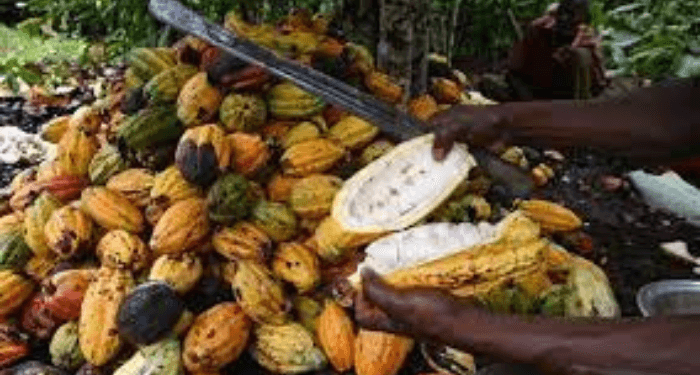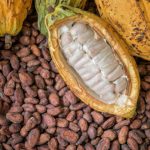Global cocoa prices have fallen to a 20-month low, signalling the end of a dramatic rally that had pushed the market to unprecedented heights and strained chocolate manufacturers around the world. Current prices stand at about $6,035 per ton, or approximately ₦8.88 million, according to the International Cocoa Organisation. This represents a steep decline from the peak of over $12,000 recorded in December 2024, marking a 50 per cent drop within months. In London, cocoa futures, which had almost tripled during last year’s surge, have also retreated sharply and are now down by about 58 per cent from their April 2024 high, trading at around $4,262 per ton.
The reversal in prices is being attributed to a slowdown in consumer demand following months of price pressure and improved prospects of better harvests in West Africa. Weather conditions in key producing countries have stabilised and early forecasts for the 2025–26 season, which began on October 1, suggest the likelihood of a surplus. Market analysts have also noted the withdrawal of speculative traders who had fuelled the previous rally and are now unwinding their positions in anticipation of further declines.
Only two years ago, cocoa markets were rattled by severe supply disruptions in Ivory Coast and Ghana, which together account for nearly 60 per cent of global production. Farmers faced a combination of dry weather, disease outbreaks, and longstanding under-investment, as many were unable to afford fertilisers or replace ageing trees. These conditions triggered fears of shortages and sent futures soaring to historic levels. Those fears have since eased as rainfall has returned, stabilising crop expectations and restoring confidence among traders and buyers.
Governments in West Africa have responded to recent challenges by sharply increasing the minimum prices paid to farmers. In the run-up to national elections, Ivory Coast raised its guaranteed rate to the equivalent of $5,000 per ton, prompting Ghana to adjust its own farmgate price to about 58,000 cedis, or $4,600. These increases are intended to encourage farmers to sell through official channels rather than informal smuggling routes and to stimulate reinvestment in farmland through better pruning, fertiliser use, and tree renewal. Industry observers believe this could boost production over time and support a more stable supply base.
Despite the price correction, few analysts believe cocoa will return to the pre-2023 trading range of $2,000 to $3,000 per ton. Structural issues such as ageing plantations, persistent crop disease, and climate-related risks continue to pose significant constraints on long-term output. For producing countries, the challenge now lies in balancing immediate relief for chocolate manufacturers with the need to sustain farmer livelihoods and protect future supply.
Last year, adverse weather in Côte d’Ivoire triggered a surge in demand and drove cocoa prices in Nigeria to an all-time high of more than ₦12 million per ton. The recent decline, although significant, still leaves prices well above historical averages. For many smallholder farmers and agribusinesses, the coming months will test whether better farmgate prices and favourable weather can translate into real investment and productivity growth across the cocoa value chain.










